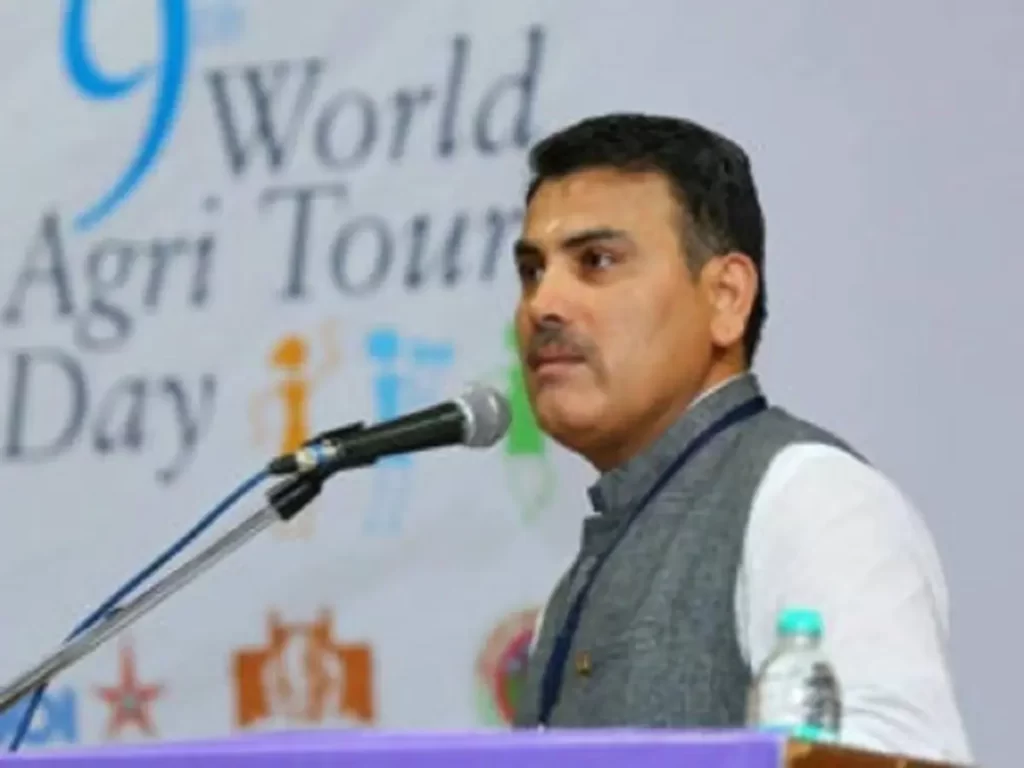Agritourism is a concept made popular in India by Pandurang Taware. The farmers associated with his venture say it has given a boost to their regular income.
“India is neither Calcutta nor Bombay; India lives in its 700,000 villages.” While M K Gandhi made this statement about half a century ago, it still remains true today, with India’s official rural population estimated to be between 100 million and 150 million.
Given how vulnerable farmers are to the vagaries of the monsoon, government regulations, and a variety of other external factors, it has become critical for them to find methods to augment their income. Pandurang Taware (52), the son of a farmer from Shangavi in Maharashtra’s Baramati district, asserts that the introduction of agritourism has helped over 628 farmers earn Rs.58 crore in the last fiscal year.
Pandurang believes that farmers should discover methods to diversify their job and increase their revenue.
“I grew up in a joint family, where everyone was involved in farming,” he stated. I went on to study computer science and worked in the tourism industry for over two decades before returning to my village.”
“In some ways, returning to farming was a means of achieving my father’s ambition. He had intended me to pursue a degree in agriculture, but my grades were not good enough at the time. After having enjoyed my stint in the tourism sector, I wanted to find a method to combine the two,” says Pandurang.
He is also known as the ‘Father of Agritourism Concept in India.’
Incorporating Lessons from the West in India
“Coming to the village and beginning from scratch was not an easy decision for my wife, Vaishali Taware, who grew up in the city. While there was some reluctance at first, she has been my biggest supporter and cheerleader over the last 19 years,” he adds.
Pandurang also mentions that when he married Vaishali, he was earning Rs.470 per month and that life was difficult financially. “Coming back to the village meant returning to our own house,” he added.
“I was 32 years old when I decided to leave a well-paying career to pursue agritourism,” he added. Agritourism as a concept has been popular in Europe for a long time and has a large following. According to Pandurang, he saw potential in developing a similar concept in India as well, and in 2002 he moved to his hometown to investigate methods to start agri tourism.
Pandurang claims that before formally establishing the agritourism concept in Maharashtra, he spent the year 2003 doing a market sample survey, and that the results assisted in the structuring of the entire concept. He says that the sample size for this market sample was 2,440 participants. Armed with this information, Maharashtra’s Agri Tourism Development Corporation (ATDC) was established in 2005.
“When I first started, everything was brand new for both the farmers and those who signed up to come and live this life.”
“We learned along the way about what would work and how we might best curate an experience for folks who visited the farm,” added Pandurang. The idea behind the venture was not just to accommodate urban dwellers, but also to give them a taste of farmer life. Along with this, Pandurang claims that fresh agricultural product is available for purchase, which increases farmers’ revenue.
Inspiring Over 600 Farmers
“My grandpa Baburao Tawade owned 13 acres of land,” Pandurang recalls of his family’s farming history. He was the father of six children, four sons and two daughters. While farming brought in money twice a year, the costs of maintaining and tending to the land came in all year. The increasing expenditures and dwindling income from farming were one of the reasons why, except from my father, none of my relatives ventured into farming.”
Pandurang also adds here that the initial confidence of seeing this concept work made him invest close to Rs.6 lakh into the venture. These were his savings from his tourism job, and sadly, the first year after the launch saw little traction with travellers. “I invested a lot of money into advertising, and despite spending a lot of money on it, we had zero calls for the first two weeks.” After a few grueling months of waiting, we finally acquired our first customer in October 2005.”
Pandurang recalls the first pilot tour fondly, recalling how he took down the booking details, escorted the group around the farm for the visit, explained how everything worked, and served them meals. It was an experience I will never forget, and it was the catalyst for our enterprise. The next three months, October to December continued to be a lull for the venture.
“It was a 4,000 member women’s group based out of Pune that visited the farm in January 2006, and since then there has been no looking back,” he added.
Over the next 18 months, the farm entertained over 13,000 tourists.
“With the kind of inflation we are facing, expecting to operate our family on the income from our agricultural output alone is not enough,” said Krishna Padtare, a farmer from Nasrapur in the Bhor taluka who has been involved with the business and Pandurang for over six years. In collaborating with ATDC we have experienced almost 5xincrease in our income.” Krishna claims that before joining ATDC, he tried his hand at various business ventures, ranging from poultry farming to dairy farming, but none of them were successful.
“Without sounding like an advertisement, I must state that agritourism provided a significant increase to mine and my family’s income,” he stated. I also learned from the visitors who came to the farm. There is so much to learn from every tourist,” says Krishna.
“The concept is simple,” Pandurang adds, “stay like a farmer, engage in farming activities, experience the bullock cart, tractor ride, fly kites, eat authentic food, wear traditional clothes, understand the local culture, enjoy folk songs and dance, buy fresh farm produce and in turn help the farmer maintain him home and earn an additional income.”
It will cost Rs.1000 per person to live this life for one day, which includes two big meals: breakfast, lunch, and evening tea with snacks. For those who wish to spend the night on the farm, the cost increases to Rs.1500, which will include all meals.
Pandurang has also received national and international recognition for his efforts to promote agritourism.
These include two national awards in 2008-2009 for introducing the most innovative tourism product in the country and for promoting responsible tourism in 2013-2014.
Pandurang was also involved in the development of Maharashtra’s agritourism policy, which requires schools to ensure that students from Class 5 to Class 10 spend time visiting a farm for one compulsory educational trip each year. “That is about 1 crore school children from various aided and unaided schools in Maharashtra. Catching them young will help make a far stronger impact,” he says.
‘Sevarth madhe parmarth’ — meaning do something that benefits not just you but people around you — with this idea in mind, Pandurang has managed to make life extremely comfortable and successful for himself and around 600 other farmers in Maharashtra. “We managed to make over Rs.50 crores pre-COVID via sales of farm produce and the tours we conduct. This amount helped over 600 farmers who are associated with us,” says Pandurang.
He is now working on expanding the concept of agritourism to other sections of the country.




